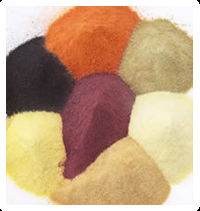Wine Purchase & Information

Alternative Names
Alcohol, Alcool, Ethanol, Éthanol, Extrait de Vin, Red Wine, Vin, Vin Rouge, Vino, Wine Extract CAUTION: Please refer to separate listing for Resveratrol
Scientific Name
Vitis Vinifera
Why Do People Use Wine?
Oral preparations of Vitis vinifera (Wine), like wine powder, are used to decrease the risk of conditions such as atherosclerosis, coronary heart disease (CHD) and myocardial infarction (MI) and for lessening the risk of type 2 diabetes and ischemic stroke. Wine powder can also be used to protect from Alzheimer's disease and cognitive decline in later life. It is also considered effective for anxiety, malabsorption syndromes, achlorhydria and as an appetite stimulant.
Topically - Wine is applied to the skin to improve rheumatoid skin ulcerations and to stimulate wound healing.
Is It Safe To Use?
Not known.
How Effective Is Wine?
Wine is considered likely effective for following conditions / diseases:
• Cardiovascular disease
• Cognitive function
• Congestive heart failure (CHF)
• Diabetes
• Helicobacter pylori (H. pylori)
There is insufficient information to rate the safety of wine powder for following conditions:
• Alzheimer's disease
• Anxiety
• Cancer
• Post-menopausal osteoporosis
How Wine Works?
Vitis vinifera is the natural yeast fermented product of the juice of sun-ripe grapes which is the fruit part of Vitis inifera. Wine generally contains 10% - 14% alcohol, mostly ethanol which is a central nervous system (CNS) depressant.
A number of mechanisms have been proposed for the defensive impacts of alcohol against coronary heart disease (CHD). Up to two alcohol beverages every day builds apolipoprotein A-I by around 2.2% and high-density lipoprotein (HDL) cholesterol by around 12%. This increment in level of HDL cholesterol may account for about 50% of the cardioprotective impact of moderate alcohol utilization. Balanced consumption of alcohol may also reduce the triglycerides by 5% to 10%, low-density lipoprotein (LDL) cholesterol by 5% - 17% and apolipoprotein B levels by 3.7%. There is an issue that moderate alcohol utilization can enhance the systolic blood pressure. But clinical experiments also suggest that light to balanced alcohol utilization does not build hypertension risk and may really diminish the risk level. Alcohol utilization diminishes platelet aggregation perhaps by means of prostaglandin synthesis inhibition. Moderate alcohol utilization is also linked to an increment in plasma levels of tissue-type plasminogen activator. Alcohol also appears to decrease interleukin-1 alpha concentration and lower fibrinogen. Light to balanced utilization of alcohol also appears to decrease coronary narrowing because of atherosclerosis.
What Are The Side Effects /Adverse Reactions of Wine?
Wine can result in a number of adverse effects because of the alcohol tontent. The symptoms depend on the quantity ingested and can vary among people. Some symptoms include confusion, flushing, perceptual and sensational disturbances, emotional lability, lack of coordination and trouble walking, blackouts, drowsiness, central nervous system CNS) depression, hypothermia, respiratory depression, abdominal pain, nausea, hypoglycemia, diarrhea, vomiting and others. Extra heavy ethanol ingestion (three or more alcohol mixed beverages every day) can prompt malnutrition, physical dependence, dementia, amnesia, cardiac myopathy, somnolence, cirrhosis and hepatotoxicity. Other impacts of chronic abuse are hypomagnesemia, pancreatitis, Wernicke's encephalopathy, skeletal myopathies, chronic cerebellar syndrome, Korsakoff's psychosis, esophageal cancer, mouth cancer, laryngeal cancer, pharyngeal cancer and liver cancer as well.
How Wine Interacts With Other Herbs and Supplements?
Following are some herbs and supplement which can interact with wine powder:
• Herbs & Supplements having Sedative Properties
How Wine Interacts With Drugs?
Following are some drugs which can interact with Vitis vinifera:
• Aspirin
• Barbiturates
• Benzodiazepines
• Cefamandole (Mandol)
• Cefoperazone (Cefobid)
• Chlorpropamide (Diabinese)
• Cisapride (Propulsid)
• Cns Depressants
• Cyclosporine (Neoral, Sandimmune)
• Disulfiram (Antabuse)
• Erythromycin
• Felodipine (Plendil)
• Griseofulvin (Fulvicin)
• H2-Blockers
• Hepatotoxic Drugs
• Metformin (Glucophage)
• Metronidazole (Flagyl)
• Monoamine Oxidase Inhibitors (Maois)
• Narcotic Drugs
• Nonsteroidal Anti-Inflammatory Drugs (Nsaids)
• Phenytoin (Dilantin)
• Tolbutamide (Orinase)
• Warfarin (Coumadin)
• B Vitamins
How Wine Interacts With Foods?
Not known.
How Wine Interacts With Lab Tests?
Following are some lab tests which may be influenced by wine powder consumption:
• Liver Function Tests
• Mean Corpuscular Volume (Mcv)
• Triglycerides
How Wine Interacts With Diseases and Conditions?
Following are different diseases or conditions which may be influenced by Vitis vinifera consumption:
• Asthma
• Gout
• Heart Conditions
• High Blood Pressure
• Hypertriglyceridemia
• Insomnia
• Liver Disease
• Neurological Conditions
• Pancreatitis
• Gastroesophageal Reflux Disease (GERD) or Peptic Ulcer Disease (PUD)
• Porphyria
• Psychiatric Disorders
• Surgery
What Should Be the Dose/Administration of Wine?
ORAL For minimizing the risk associated with cardiovascular disease, and ischemic stroke take 1-2 glasses (aproximatly120 to 240 mL) daily. Up to four glasses everyday should be used to minimize the potential risks associated with heart failure.
Daily usage of one drink can also reduce the cognitive decline in older men. Up to two drinks every day in each week and 3-4 drinks daily has been used to decrease the type 2 diabetes risks in healthy males. People suffering from coronary heart disease (CHD) with type 2 diabetes should consume about seven drinks per week in order to reduce its probability to happening. Use more than 75 grams of alcohol from beverages like wine has been used to decrease the Helicobacter pylori infection risks.
TOPICAL There is specific topical dosage of wine reported.
Comments
Decreased heart attack risk in French population is not due to red wine consumption, but due to their diet that is very low in fat.
General Certificate of Analysis (COA)
Specification sheet links below are a standard copy of the COA less the batch or lot number and manufactures dates. Specification sheet can be dated and should only be considered as a general information. Please contact and request an up to date COA if needed for specific updated information before placing order by filling out the contact form with product name and SKU number. If ordering quantities of twenty five kilos or more contact for availability.
